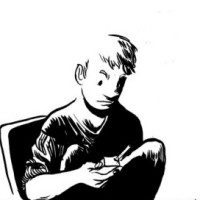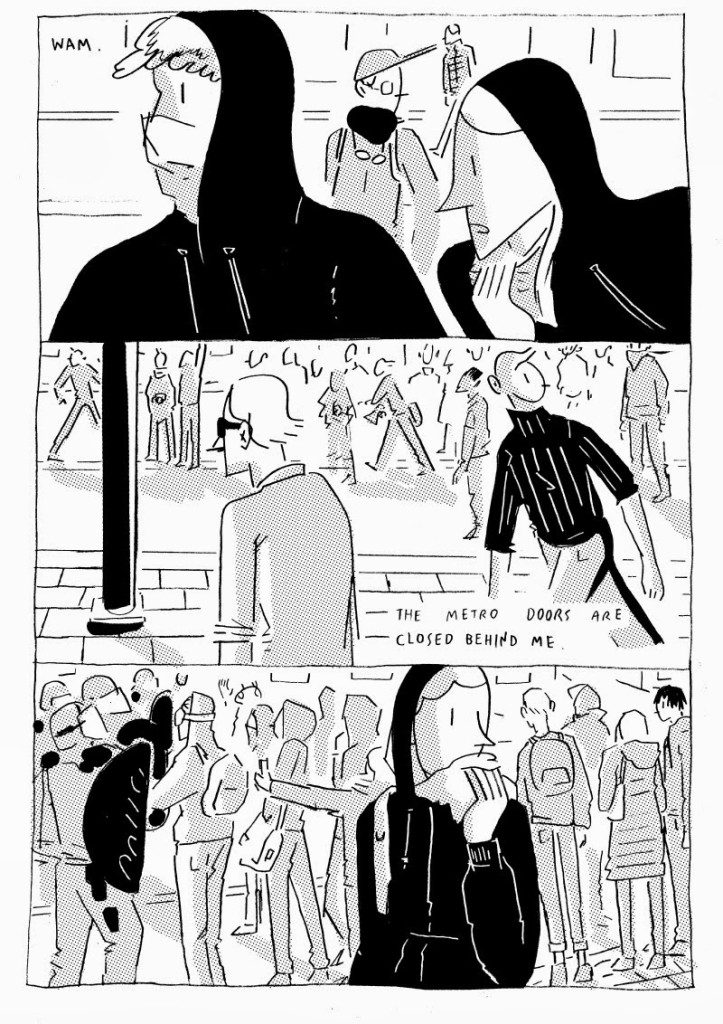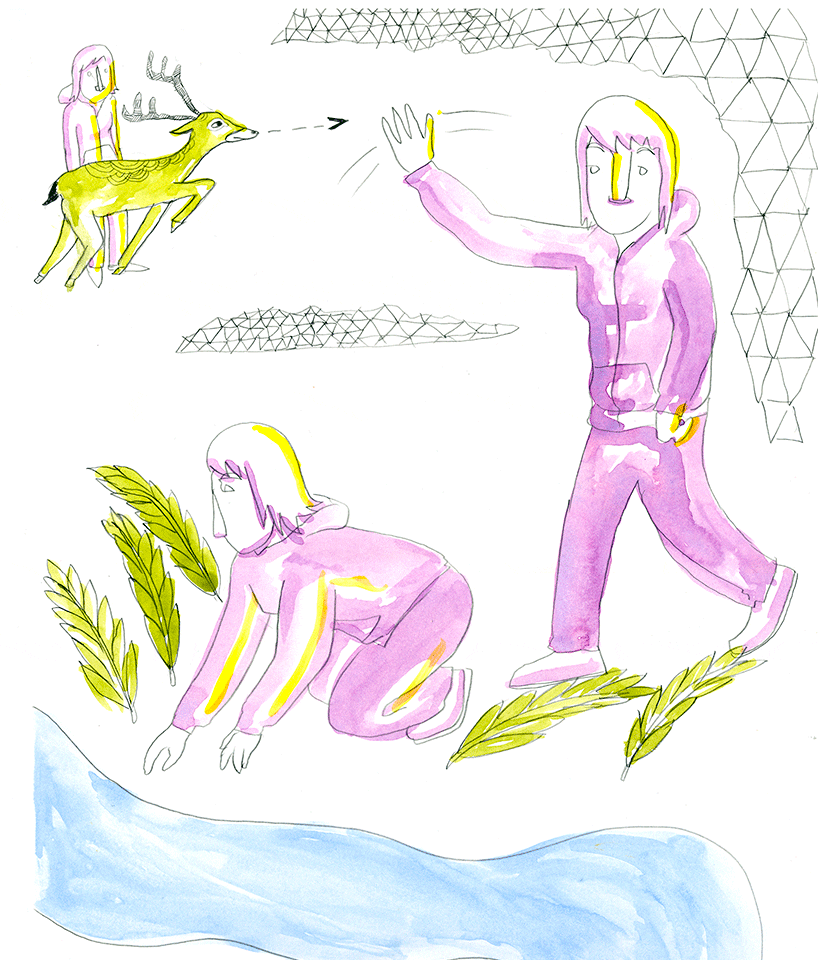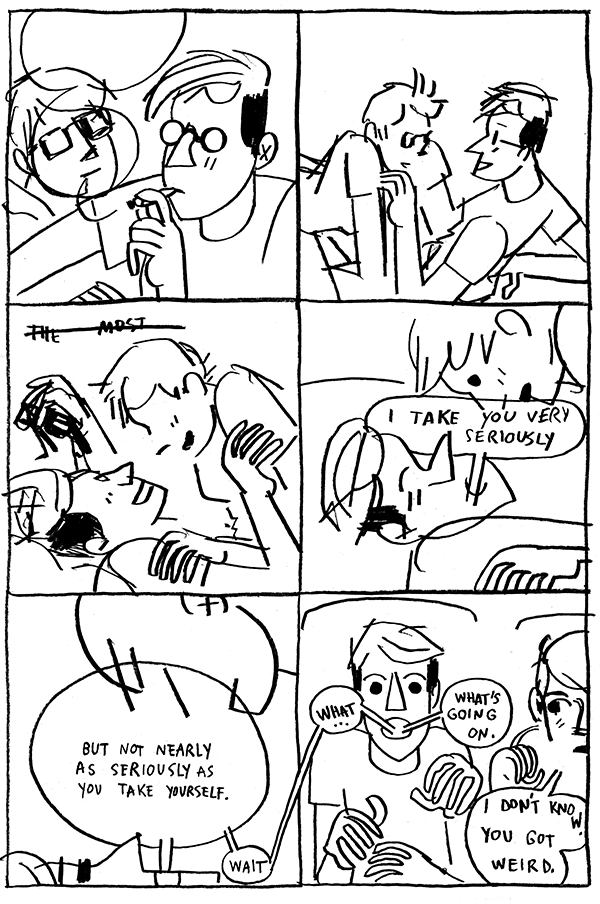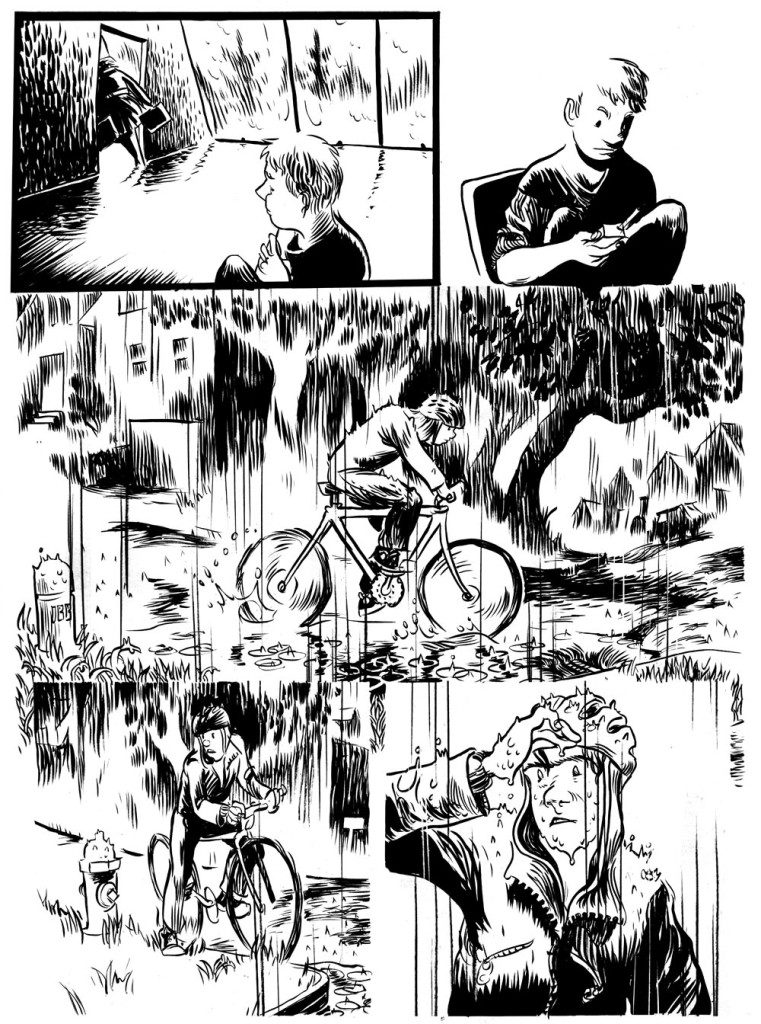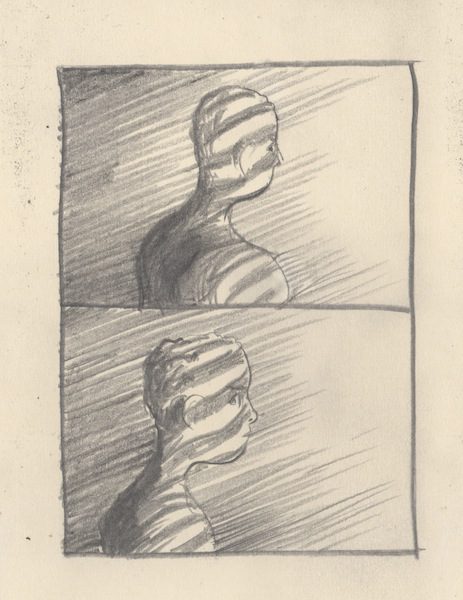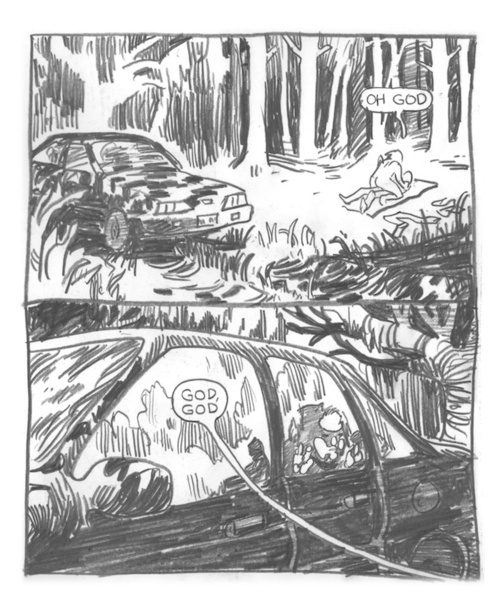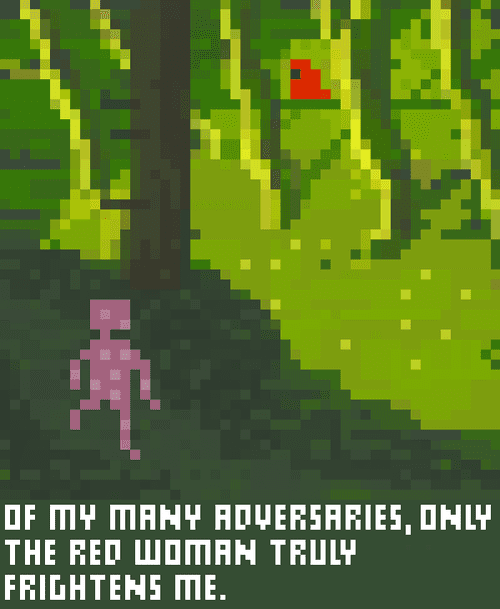The New York Comics & Picture-Story Symposium is a weekly forum for discussing the tradition and future of text/image work. Open to the public, it meets Tuesday nights from 7-9 p.m. EST in New York City. Presentations vary weekly and include everything from historical topics and technical demonstrations to creators presenting their work. Check out upcoming meetings here.
At the 81st meeting of the New York Comics & Picture-Story Symposium, Sophie Yanow and Sam Alden presented on their work. Both cartoonists are currently based in Montreal with the Colosse studio collective.
Yanow began her talk by reading from her comic War of Streets and Houses, a memoir about her experience of the 2012 Quebec student protests. She then talked about the importance of urban planning in her work, especially its connection to social control and colonization.
Her path to creating memoir comics with tie-ins to social theory was not a direct one. Growing up, she was into manga and anime like Serial Experiments Lain, which pushed her earlier work in a different direction. She later stated that manga sensibilities may still impact her work in subtle ways, e.g. certain methods of simplifying figures and objects almost to the point of abstraction. Yanow also recognizes that the stigma of memoirs being “women’s work” kept her away from them at first. Eventually, however, she discovered comics like Gabrielle Bell’s Lucky and the work of Ariel Schrag, and decided to try the memoir form.
In her earlier work, she used watercolor and maintained something of a manga feel. Big leaps for her came from doing 24-hour comics—in which cartoonists make a page of comics an hour for 24 hours—and later a series of daily comics. The three most important components to her work, she explained, are rhythm, poetry, and design. She cited the cartoonist Seth’s adage that comics are a combination of poetry and graphic design. Yanow prefers these comics to those that seem closer to literature mixed with illustration, wherein the reader’s eye is more likely to take in the visuals and text separately.
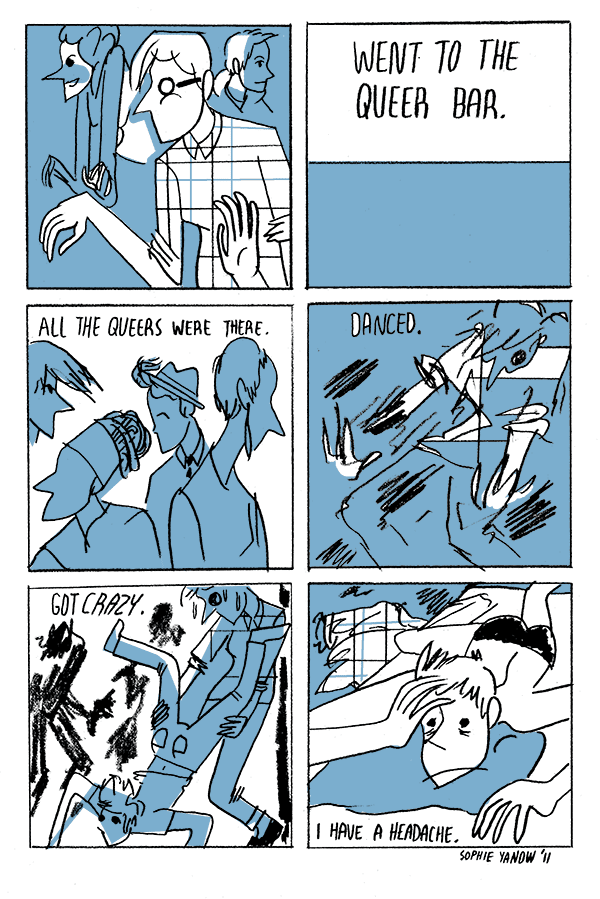
When she was living in Seattle, she showed her work to Eric Reynolds of Fantagraphics, who remarked that she needed to find her subject matter. She took this advice to heart. It was in Seattle that she rediscovered her love for poetry. She said that Eileen Myles’ Inferno was a big influence around this time as well.
She then reached out to Vincent Giard about the Colosse studio residency in Montreal, and was accepted. Before going, she decided to make daily comics, and made such breakthroughs in the first few that Giard and co. asked her to focus on that type of work during her residency. These comics became an ongoing autobiographical series called In Situ.
Having a system to work within is important for Yanow, as with the six-panel grid she often uses, though the ability to break her own rules is important, too. She has adopted Gabrielle Bell’s method of doing her preliminary sketches for comics on graph paper to make paneling easier and then using a lightbox to trace the finals.
***
Sam Alden spoke mainly on the importance of materials, the specific aesthetic each one creates, and how experimentation in this vein drives his comics practice. Materials are often written off as being superficial to the content of a work, but Alden believes that when used correctly, they dictate a comic’s narrative.
He began by describing a comic he made at age 19, in which he aped a detailed, brushy inking style that was popular at the time (e.g. that of Craig Thompson and Jillian Tamaki). He used this “commercial illustration style,” as he called it, for a few pieces, including a cover for Cicada magazine. He said that he had wanted to make what he considered a “serious comic,” which, he noted humorously, turned out to be a story about a group of angsty white teenagers. His originals then were 14×7”, which he considers huge. The size led him to add a lot of detail to the work that he was not crazy about. He worked on this story, 8th Grade, for four years, until cartoonist Dash Shaw texted him and told him to scrap the project, which he did. Alden said the problem with this comic was that there was no sense of play, and no room for the narrative to grow organically.
Throughout his talk, Alden self-deprecatingly alluded to cartoonists whom he felt he was imitating in each work. Next, he showed a short dream comic inspired in part by the work of Susumu Katsumata and Imiri Sakabashira. He did not allow himself to edit this work at all in Photoshop or to use whiteout, which taught him a lot about being careful early in the comics process. He stated that his comic The Worm Troll, which he drew entirely with Micron pens, owed a lot to the work of Tove Jansson. He later wanted to recreate the style of Lorenzo Mattotti, but was travelling with only a mechanical pencil, so he decided to work small in order to pull out the texture of the pencil’s line. The resulting work, Hawaii 1997, was a breakthrough for Alden.
Simplified characters lack the details of individuals, he noted, and thus can be used to create psychological distance, as he did in Household, a comic involving incest. The pencils in Household were a bit more considered, but otherwise his process was similar to that of Hawaii 1997. Backyard was a pencil piece as well, but Alden allowed more detail in his settings.
Alden expressed unhappiness with his forthcoming story Anime, but added that confidence is bad for his process because it means he stops putting in the work. Alden is the type of cartoonist who feels more creative when drawing than writing, so that is usually how he starts a comic. He stated that everything you go through, including self-doubt, should be used as fuel for making things. Though perfectionism and self-criticism drive his work, it is important for him that the process never feel like a chore.
He feels as though his pencil comics are not a challenge anymore, and has started making pixel art comics with a low-tech paint program. He has been posting the comics on a secret Tumblr. He added that he will most likely return to the pencil work at some point.
***
Image credits from top:
1: A page from War of Streets and Houses by Sophie Yanow, published by Uncivilized Books
2: A page from Sophie Yanow’s 24-hour comic, WORLDS
3: A page from In Situ #1 by Sophie Yanow, published by Colosse
4: A page from In Situ #2 by Sophie Yanow, published by Colosse
5: A page from Eighth Grade by Sam Alden
6: A page from Household by Sam Alden
7: A page from Backyard by Sam Alden, published by Sonatina Comics
8: An image from The Red Woman by Sam Alden
***
About the author: Jess Worby is a professional illustrator, cartoonist, visual artist, and teacher. His work has been featured in The New York Times, Wired.com, and Kotaku, and received an honorable mention in Best American Comics 2013. Some of his most recent illustrations can be seen in The Portlandia Activity Book, published by McSweeney’s. // @jworbeast
